Papers by Caio G Zeppelini
Anais da Academia Brasileira de Ciências
Bartonella are rodent-borne bacteria that cause varied human etiologies. Studies on synanthropic ... more Bartonella are rodent-borne bacteria that cause varied human etiologies. Studies on synanthropic rodents are rare, causing gaps in epidemiological knowledge. We tested bloodclot samples from 79 rats from an urban slum in Salvador, Brazil through PCR targeting gltA gene. Nine samples (11.4%) were positive: six had 100% identity with Bartonella sp. isolate JF429580 and 99.5% with B. queenslandensis strain AUST/NH8; three were 100% identical to isolate JF429532 and 99.7% to B. tribocorum. This is the second report on urban rat Bartonella indicating bacterial circulation at detectable rates. Its presence in rats from vulnerable human settlements demands public health attention.

Background Leptospirosis is a zoonosis caused by pathogenic species of bacteria belonging to the ... more Background Leptospirosis is a zoonosis caused by pathogenic species of bacteria belonging to the genus Leptospira. Most studies infer the epidemiological patterns of a single serogroup or aggregate all serogroups to estimate overall seropositivity, thus not exploring the risks of exposure to distinct serogroups. The present study aims to delineate the demographic, socioeconomic and environmental factors associated with seropositivity of Leptospira serogroup Icterohaemorraghiae and serogroup Cynopteri in an urban high transmission setting for leptospirosis in Brazil. Methods/Principal Findings We performed a cross-sectional serological study in five urban informal communities in the city of Salvador, Brazil. During the years 2018, 2020 2021, we recruited 2.808 residents and collected blood samples for serological analysis using microagglutination assays. We used a mixed-effect multinomial logistic regression model to identify risk factors associated with seropositivity for each serog...
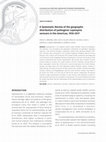
Anais da Academia Brasileira de Ciências
Leptospirosis is an important public health problem caused by Leptospira. The objective is to cha... more Leptospirosis is an important public health problem caused by Leptospira. The objective is to characterize the geographic distribution of pathogenic leptospira serovars in the Americas through a systematic review of the literature between 1930-2017. Searches were conducted in six scientifi c databases (PubMed, Web of Science, Embase, Lilacs, Scopus and Cochrane). We included studies conducted unambiguously in the Americas, that investigated infection of Leptospira in humans and animals in their natural environments with serovar identifi cation. 283 articles were included, of which 69 were studies in humans, 86 in wild animals, and 182 in domestic animals. Most of them conducted in Brazil (104, 36.7%) and in rural environments (158, 55.8%). Bovines, equines and dogs where the most frequently studied domestic species. However, a large diversity including 80 species of wild animals were studied. Icterohaemorrhgiae, Canicola, Pomona and Grippotyphosa were the most common serovars, described in 46 (16.2%), 38 (13.3%), 32 (11.3%) and 26 (9%) of the articles, respectively. The Results i ndicate a large concentration of studies in Latin America, with emphasis on Brazil, in wild mammals and three main domestic animal groups. Our results emphasize the need for studies that delve into the relationships of the epidemiological cycle, environment, and health.
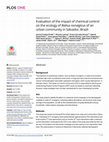
PLOS ONE
Background The presence of synanthropic rodents, such as Rattus norvegicus, in urban environments... more Background The presence of synanthropic rodents, such as Rattus norvegicus, in urban environments generates high costs of prophylaxis and control, in large part due to the environmental transmission of the pathogenic spirochete Leptospira interrogans, which causes leptospirosis. In Salvador, Brazil, The Center for Control of Zoonosis (CCZ) is responsible for planning and implementing Rodent Control Programs (RCP) which are based on chemical rodenticide. However, these strategies have not been standardized for use in developing countries. Aim This study aimed to identify the effect of a chemical control campaign on the demographic variables of urban R. norvegicus, analyzing relative abundance, sex structure, body mass, and age of the population, as well as the characterization of spatial distribution among households, rodent capture campaigns and interventions. Methods This study was carried out during 2015 in three valleys of an urban poor community in Salvador. Individuals of R. no...
International Journal of Pest Management
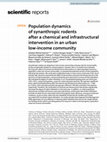
Scientific Reports
Synanthropic rodents are ubiquitous in low-income communities and pose risks for human health, as... more Synanthropic rodents are ubiquitous in low-income communities and pose risks for human health, as they are generally resistant to control programs. However, few or no studies have evaluated the long-term effect of chemical and infrastructural interventions on rodent population dynamics, especially in urban low-income communities, or evaluated the potential recovery of their population following interventions. We conducted a longitudinal study in a low-income community in the city of Salvador (BA, Brazil) to characterize the effect of interventions (chemical and infrastructural) on the dynamics of rodent population, and documented the post-intervention recovery of their population. We evaluated the degree of rodent infestation in 117 households/sampling points over three years (2014–2017), using tracking plates, a proxy for rodent abundance/activity. We reported a significant lower rodent activity/abundance after the chemical and infrastructural interventions (Z = −4.691 (p < 0.00...
This data was collected in four Brazilian informal settlements located in the city of Salvador - ... more This data was collected in four Brazilian informal settlements located in the city of Salvador - the third largest city of Brazil - in the wet season of the year 2018. The data includes the collection of three rat abundance metrics - namely, rat marks on track plates, rats caught in live traps and removed, and presence of rat signs (faecal droppings, trails and active burrows) - in a total of 529 independent sampling locations. In addition to the single rat metrics, which were also used to compose the rattiness outcome, the data contain the baseline environmental and socioeconomic (surveyed and mapped) variables and the BUS variables considered in Carvalho-Pereira et al., 2022.
Mastozoología Neotropical, 2020

Parasitology, 2021
The nematode Angiostrongylus cantonensis is the most common cause of neuroangiostrongyliasis (man... more The nematode Angiostrongylus cantonensis is the most common cause of neuroangiostrongyliasis (manifested as eosinophilic meningitis) in humans. Gastropod molluscs are used as intermediate hosts and rats of various species are definitive hosts of this parasite. In this study, we identified several environmental factors associated with the presence and abundance of terrestrial gastropods in an impoverished urban region in Brazil. We also found that body condition, age and presence of co-infection with other parasite species in urban Rattus norvegicus, as well as environmental factors were associated with the probability and intensity of A. cantonensis infection. The study area was also found to have a moderate prevalence of the nematode in rodents (33% of 168 individuals). Eight species of molluscs (577 individuals) were identified, four of which were positive for A. cantonensis. Our study indicates that the environmental conditions of poor urban areas (presence of running and standin...

SN Applied Sciences, 2021
Rats are invasive pest species that commonly infest low-income urban environments. Their associat... more Rats are invasive pest species that commonly infest low-income urban environments. Their association with humans constitutes a threat of rodent-borne disease transmission. We evaluated the outcome of a chemical and sanitary intervention on rat sightings in seven low-income urban settlements of New Providence, the Bahamas. The intervention consisted of rodenticide application, education about environmental sanitation, and improvement in waste disposal. Rat sightings were systematically recorded by trained staff before and three months after the intervention. The intervention slightly decreased rat sightings, with an average of 2.7-fold with varied effectiveness across locations. Four out of seven locations (57%) registered a decrease in rat sightings. Our results suggest that social and environmental differences among communities may be responsible for the mixed efficacy observed in the current rodent management practice in urban communities of the Bahamas. However, a new set of cont...
Neotropical Biology and Conservation, 2017

Acta tropica, 2018
Leptospirosis is caused by the spirochetal bacterium Leptospira of which rodents are considered t... more Leptospirosis is caused by the spirochetal bacterium Leptospira of which rodents are considered the most important reservoir. This study aims to determine and characterize virulent Leptospira species among rodents and small mammals found in human settlements and recreational spots within the Hulu Langat and Gombak districts of Selangor, Malaysia; regions that frequently report probable human leptospirosis cases. Molecular analysis revealed an overall Leptospira detection rate of 14.3% among the 266 small mammals captured, and the human settlements were found to have the highest number of isolates (15.1%), followed by recreational sites (14.5%). The molecular characterization conducted based on the lipL32, secY genes and MLST revealed that the strains belonged to four different species, including; Leptospira interrogans (29; 76.3%; ST50, ST238, ST243), L. kirschneri (5; 13.15%; ST110), L. borgpetersenii (3; 8%; ST143) and L. weilii (1; 2.63%; ST242). The study revealed genotypes of c...

Acta Chiropterologica, 2017
Nocturnal activity is a key factor in the success of bats, along with several other ecological ch... more Nocturnal activity is a key factor in the success of bats, along with several other ecological characteristics of the group. Studying the activity patterns of bats can help to understand ecological and behavioural aspects of bat assemblies, especially in the Neotropics, where the group presents high species richness. The activity patterns of five species of Neotropical bats, sampled in a Reserve in the Brazilian Northeastern Region, were analysed. A general trend emerged, with an activity peak in the first half of the nocturnal observation. The overlap of activity patterns in closely related species (Artibeus planirostris and A. lituratus) agrees with previous findings that the nocturnal activity peaks in frugivorous bats have not evolved to relieve competition. The present work provides the first whole-night activity data for Dermanura cinerea. The results demonstrate the importance of whole-night sampling studies; not only as an opportunity to assess different ecological and behavioural data but also to efficiently register the abundance and richness of the assembly.
Acta Scientiarum. Biological Sciences, 2016
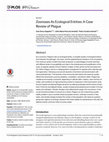
PLoS neglected tropical diseases, 2016
As a zoonosis, Plague is also an ecological entity, a complex system of ecological interactions b... more As a zoonosis, Plague is also an ecological entity, a complex system of ecological interactions between the pathogen, the hosts, and the spatiotemporal variations of its ecosystems. Five reservoir system models have been proposed: (i) assemblages of small mammals with different levels of susceptibility and roles in the maintenance and amplification of the cycle; (ii) species-specific chronic infection models; (ii) flea vectors as the true reservoirs; (iii) Telluric Plague, and (iv) a metapopulation arrangement for species with a discrete spatial organization, following a source-sink dynamic of extinction and recolonization with naïve potential hosts. The diversity of the community that harbors the reservoir system affects the transmission cycle by predation, competition, and dilution effect. Plague has notable environmental constraints, depending on altitude (500+ meters), warm and dry climates, and conditions for high productivity events for expansion of the transmission cycle. Hum...
Journal of Ethnobiology and Ethnomedicine, 2015
An author was unfortunately omitted from the original publication of this article [1]. Luiz Carlo... more An author was unfortunately omitted from the original publication of this article [1]. Luiz Carlos Serramo Lopez has been added as the third author of this article and the Authors' contributions section has been updated accordingly. Authors' contributions KMCR performed the field data collection and wrote the first original manuscript in Portuguese (Master's thesis), CGZ prepared the submission version of the manuscript and carried the taxonomical identifications demanded, LCSL coordinated the research project, performed the original analysis, advised and mentored the original manuscript (Ms. KMCR Master's thesis), RRNA developed the interview protocol, proofed and supervised the manuscript. All authors read and approved the final manuscript.
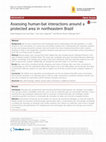
Journal of Ethnobiology and Ethnomedicine, 2015
Background Bats are key components to the Neotropical forests. Unfortunately, their bad reputatio... more Background Bats are key components to the Neotropical forests. Unfortunately, their bad reputation is a major obstacle in their conservation as it creates fear and hostility towards them. Understanding this reputation acquired by bats and studying interactions between bats and humans has shown fundamental promise when creating strategies to forge a non-antagonistic coexistence between both parts and in the promotion of bat conservation in areas with ever-rising human occupation. Methods Ninety people were surveyed from three villages that were situated around a Biological Reserve in the state of Paraiba; located in Northern Brazil. The survey was completed using semi-structured interviews addressing villager’s knowledge of the biology and ecology of bats, their interactions with bats, potential medicinal uses, and their socioeconomic situation. Additionally, we sampled the bats that reside in or visit these villages. Results Bats were often considered harmful, dangerous and carriers...








Uploads
Papers by Caio G Zeppelini